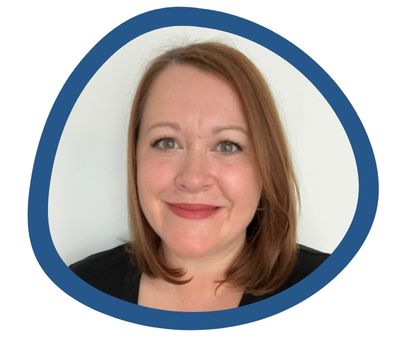
What are HMO specialist mortgages?
HMO specialist mortgages are designed for those with specific requirements, such as individuals with low credit scores or those who have no experience as a landlord. As HMO mortgages are already a complex product, you may find that you have limited choice when selecting a lender who can help with your specific requirement.

Are HMOs a good investment?
When applying for a HMO mortgage, often it is easier to attract tenants to the property. This is because HMO’s can be rented by room in house share capacity, therefore the cost to rent tends to be lower in comparison to renting a whole property. In locations where it is more expensive to live, these types of properties are more common. Tenants such as students and young professionals mostly live in the types of properties.
It is worth noting that HMO properties are often more difficult to manage than a standard buy to let. Most landlords have each tenant under a separate contract, however this isn’t always the case. Some HMO properties are let out under one AST.
HMO properties can also come with high utility costs, so it is important that you are able to afford high costs like this (unless bills are payable by the tenants), so that you are able to maintain the property’s living conditions. Besides high costs, investing in HMO property can be a good investment as it is found that more rental income could be generated with these types of properties.
Can I get a HMO mortgage with no experience?
Yes, you can get an HMO mortgage with no experience. Although, it is important to know that some mortgage lenders prefer applicants with more experience as it can give them more confidence that they are able to make the monthly mortgage payments.
If you are first time buyer looking to secure a HMO mortgage, there will be a limited amount of lenders that could help. This is because you are seen to be more ‘risky’, and may consider you to have ‘lack of experience’. However, at Mercantile Trust we believe that experience shouldn’t stop you from investing in your first HMO property. This is why we lend to first time buyers and first time landlords up to 65% LTV.
Can I get a HMO mortgage with bad credit?
Yes, it is possible to get a HMO mortgage with bad credit. Although it is more challenging than getting a HMO mortgage with good credit. As we are a specialist lender, we help those who do have poor credit. We help individuals who are turned down by high-street lenders.
How much deposit do I need for a specialist HMO mortgage?
Deposits for HMO mortgages are often required to be between 20 – 25%. However, if you are first time landlord or first time buyer you may need to provide from 30%-35% of the property’s value.
Enquiring is easy

How Mercantile Trust could help
As a specialist mortgage lender, getting an HMO mortgage has never been easier. If you have poor credit, or no experience as a landlord we could get you the HMO mortgage you need. Where most lenders say ‘no’ we often say ‘yes’.
Call our free number on 0800 032 3737 and you will be connected directly to one of our experienced advisors.
Your advisor will discuss your needs and answer any questions you may have. We could even give you a lending decision in the very same phone call.
Ready to enquire?
Talk to our mortgage experts now
Ready to enquire?
- Friendly UK based advisors
- Enquiring won't affect your credit rating
- Funds possible in 48 hours
- No annoying phone menus, call an advisor direct
- We are a direct lender, no hidden broker fees

Tara Evans, Director of Operations
01923 280199
Frequently asked questions
A buy to let mortgage is a finance agreement that allows you to purchase a property in order to rent it to a third party.
A regular residential mortgage does not let you rent the property out, unless you gain the permission of your mortgage lender. Whilst residential lenders may give you permission if you ask for it, there will often be an additional charge to do so.
Buy to let mortgage affordability calculations are assessed on the potential rental income of the property i.e. how much rent can be charged for the house or flat / apartment being purchased. This means that your personal income is less of a factor.
The only exception is if you are a first time buyer, where personal income is assessed, in order to protect those who are new to property investment from over-stretching themselves financially.
Lenders will want to see that applicants do have some form of personal income, but many don’t have a minimum income requirement, so if you have retired and are on pension income, or you are self-employed and have a low income, or your personal income is low for any other reason, you may still be eligible for a buy to let loan.
When you speak to a buy to let mortgage lender direct, the process for getting a buy to let mortgage generally includes similar steps.
First of all, you would speak to a mortgage advisor for the lender, who will discuss how much you want to borrow, how much deposit you have to put down, and the rent you are receiving for the property (if you are remortgaging) or expect to receive (if you are purchasing).
The advisor will also ask you about the property in more detail, your experience in property (e.g. do you own your own home, do you own other properties), your financial situation and credit history.
This information helps a lender advisor assess whether you are a match with their criteria. Lenders build a picture of the type of property and applicant they are willing to lend to, this is their "criteria".
If your application matches the lender criteria, the property you are investing in will be valued and if the valuation matches the borrowing calculation for a deal the lender can offer you, they will grant you a "decision in principle" (DIP) or "agreement in principle" (AIP).
A DIP or an AIP simply means that if you proceed with an application and all other details you have provided meet the lenders approval, you will be offered a mortgage.
It is very important that all the information you provide is accurate, because if it isn't, the lender may be unable to accept your application.
There will be documents a lender requires from you to support your application, proof of affordability (e.g. tenancy agreement and proof of rent into a bank account), proof of your identification (if electronic checks fail) and signed lender documentation.
Once all the documents are back with the lender, the case will be processed and funds paid to you.
The amount of deposit you have available can have a significant impact on your mortgage.
The larger your buy to let mortgage deposit, the lower amount of credit you will need to borrow. If you borrow less money, your monthly payments and interest rates could be lower and the total amount you repay could be reduced.
The reason the cost or a mortgage is typically lower with a larger deposit, is because the lender takes on less of the risk than if they were lending to someone who wanted to borrow at a higher loan to value with a lower deposit.
The buy to let mortgage rate you are offered depends on a number of factors unique to your case. This includes your financial situation, the rental income of the property you’re looking to purchase, how much you’re expecting to borrow, your credit profile and whether you’re borrowing for a first or second charge mortgage.
Because of the amount of factors considered, buy to let mortgage rates can vary. Whilst you can input details about the borrowing you need into various online buy to let mortgage rate comparison tables, they usually cannot overlay the lender criteria, so you may be looking at a product you are not eligible for.
Having a discussion with a lender directly, will help you find out if you qualify for their products, and which product specifically from amongst their range.
Having a discussion with a broker, who has access to an extensive breadth of lenders, will help you establish the most competitive deal you can secure from across the buy to let marketplace.
If you want to raise some extra cash and release some equity from an existing mortgaged rental property, a second charge buy to let mortgage could be the ideal solution.
Whether you want to raise the money for a deposit for your next property, to renovate an existing property or for any other reason at all, a second charge buy to let mortgage is a great way to get the capital you need, fast.
A second charge mortgage sits alongside your existing buy to let mortgage product without affecting it. It is an alternative to remortgaging.
Always be prepared for times when there’s no rent coming in
In the life of any rental property, there will almost certainly be periods when there is no tenant and no rent is being received. It is essential to plan ahead for these times (known as “voids”) as you will still be required to make your mortgage repayments in order to retain the property.
During the times you are receiving rent, transfer some of it to a savings account and keep this account topped up whenever possible. This money can be used to make mortgage payments during voids, or to cover any unexpected repair bills such as blocked drains or a broken boiler.
Never rely on the sale of the property to repay its mortgage
Assuming that you will be able to sell a property in order to repay the mortgage can be a risky trap to fall into. Even in a buoyant economy there is always the danger of house prices dropping. If this was to happen, you may not be able to sell your property for as much as you anticipated, and you would still have to cover the difference on the outstanding mortgage.